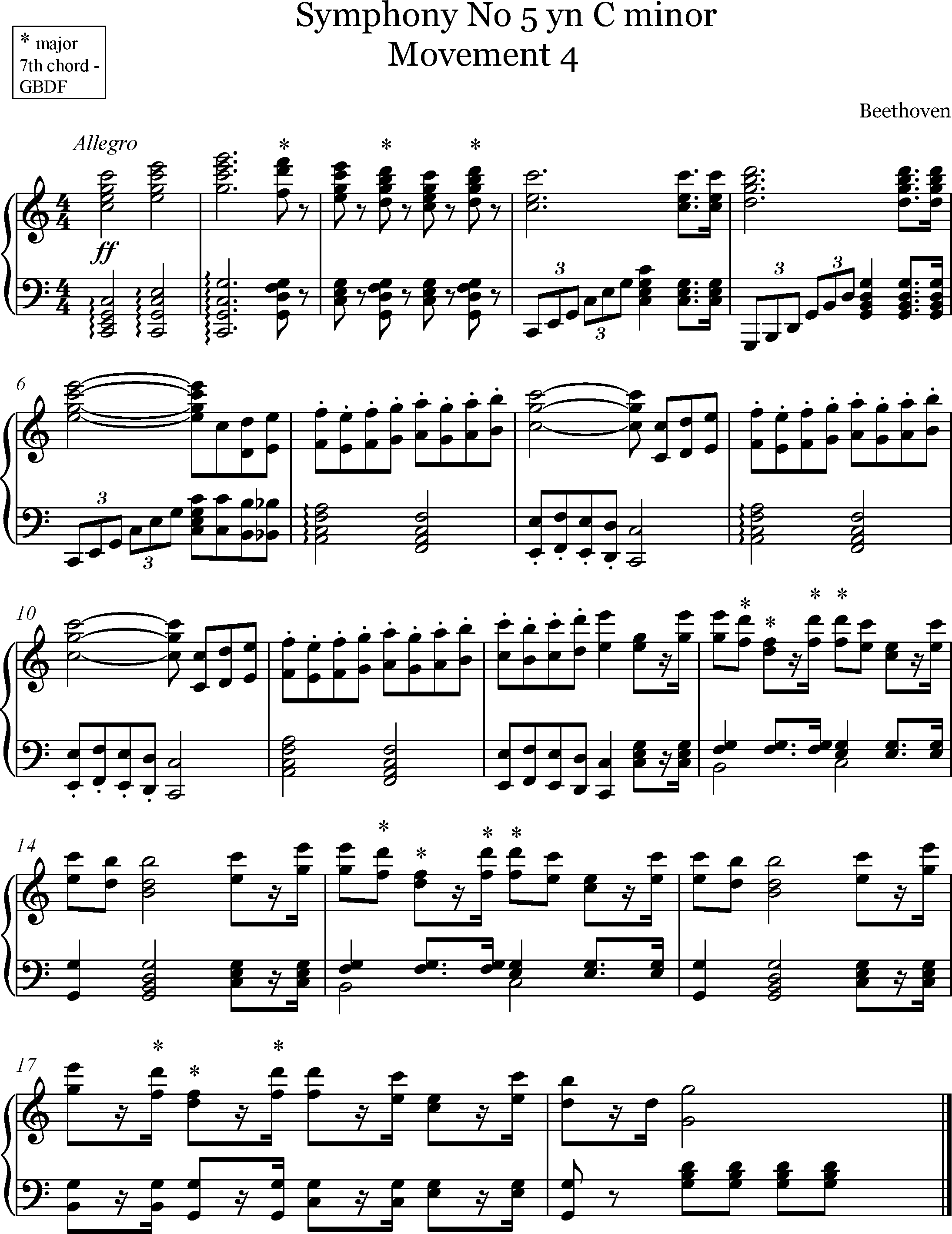C1A | 7th chords
What are 7th chords?
- 7th chords are created when 7th intervals are added above the root of triadic chords.
- There are many examples of 7th chords and the most common ones will be discussed.
- What about starting with the chord of the dominant 7th?
- This chord is created by adding an interval of a minor 7th above the root of a major triad.
Notice the top note in each chord. It creates a minor 7th interval with the bottom note (the root). The second chord in each bar shows the resolution to the tonic chord each time.

in the key of C major
in the key of B♭ major
in the key ofA minor
in the key of D minor
- This chord is called the dominant 7th chord because it contains the triadic notes of the dominant degree of the scale in any key, and the added 7th note that exists in that key.
- Since the interval of a 7th creates a discord, it needs to be resolved; usually to a tonic chord, creating a perfect cadence in a major or minor key.
- If the dominant 7th is left suspended without being resolved, it’s a chord that creates an incomplete sensation.
Listening to dominant 7th chords
Watch the video below to see and hear the melody and the chords employed. It comes from Beethoven’s Symphony no. 5. Since movements 3 and 4 follow each other without a break, the example given begins in 00:33.

Chord of the dominant 7th
A dominant 7th is created by adding a minor 7th interval above the root of a major triad.